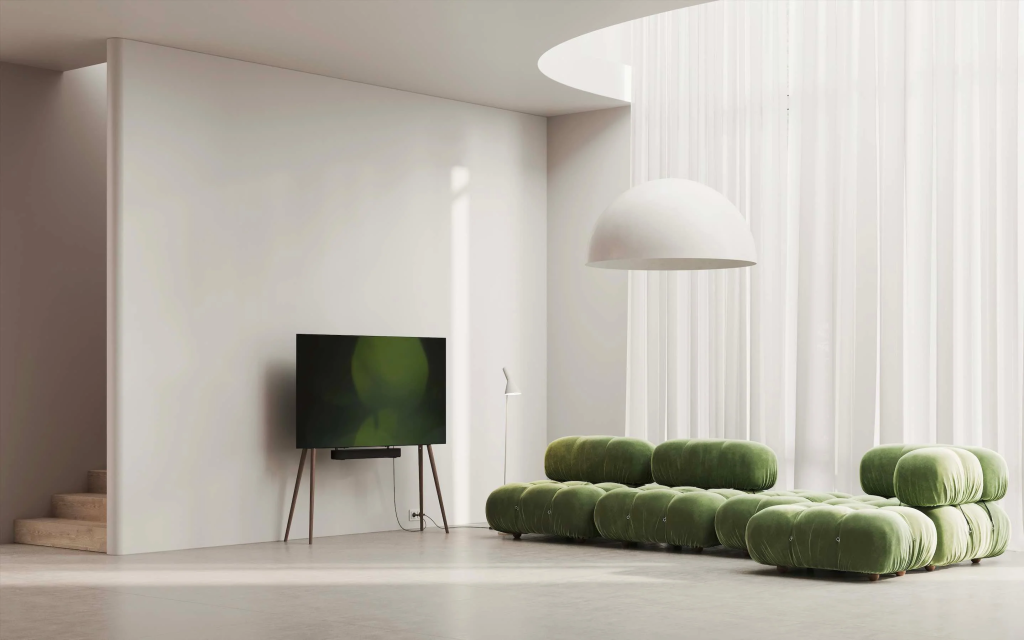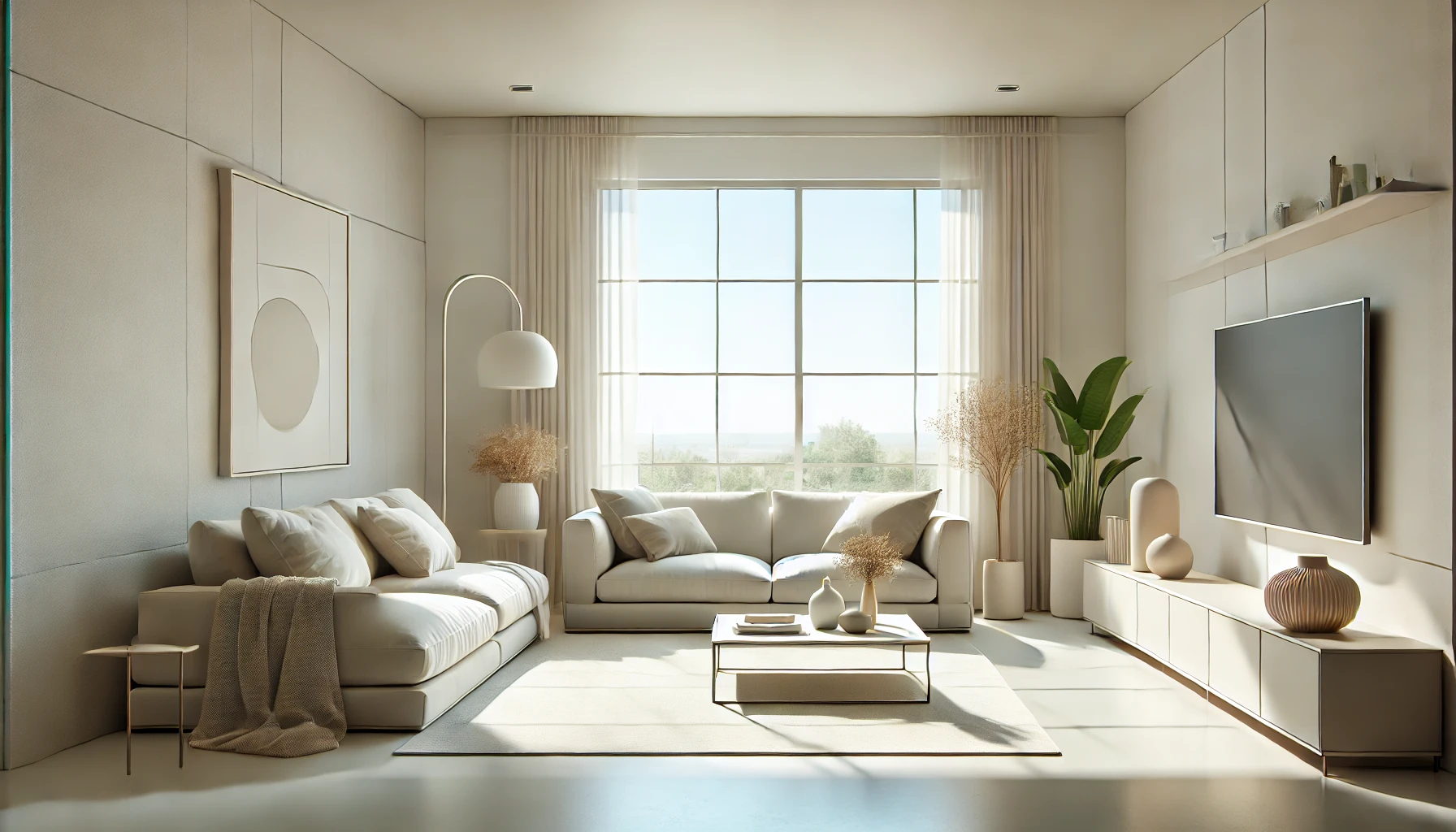Minimalism has become more than just a design trend — it’s a lifestyle that reflects a shift toward clarity, functionality, and calm. In a world overwhelmed by excess, modern minimalist interiors offer a retreat into intentional living and elegant simplicity.
What Is Modern Minimalism in Interior Design?
At its core, modern minimalism emphasizes simplicity without sacrificing sophistication. It thrives on clean lines, neutral tones, and the belief that “less is more.” Unlike traditional minimalism, which can sometimes feel cold or rigid, modern minimalism invites warmth through thoughtful materials, organic textures, and well-curated pieces.
The roots of minimalism trace back to the Bauhaus movement and Japanese Zen philosophy. Over time, these influences merged with modern aesthetics to create a hybrid that’s both functional and visually pleasing. Today, minimalist interiors are not just about removing clutter but about creating space for what truly matters.
While contemporary minimalism often embraces trends and visual contrast, modern minimalism remains more grounded in consistency, restraint, and function. The distinction lies in subtle details — fewer decorative accents, purposeful furniture, and an almost invisible sense of order.
Why Choose a Minimalist Interior?
A minimalist home offers more than beauty — it offers peace. Many studies have linked uncluttered environments with reduced stress and improved mental clarity. The simplicity of design promotes better focus and relaxation, allowing each room to breathe and serve its intended function.
Moreover, minimalist interiors are naturally space-efficient. When every item has a purpose, you eliminate the chaos of unnecessary objects. This is particularly beneficial in urban living environments where square footage is limited.
Minimalism also aligns well with sustainable living. Instead of buying frequently, you invest in fewer, higher-quality items. The mindset of conscious consumption leads to more durable, eco-friendly choices and a home that evolves gracefully over time.
Essential Elements of a Minimalist Interior

The visual appeal of minimalism comes from harmony and balance. Neutral colors — whites, soft grays, beiges — act as the foundation, creating a calm backdrop. The furniture tends to follow geometric forms with gentle curves or straight lines. There’s an emphasis on multi-functionality, where design meets utility.
Clutter is the enemy of minimalism. Smart storage solutions — like built-in cabinetry or under-bed drawers — help keep items out of sight but easily accessible. Natural light also plays a vital role, opening up spaces and enhancing the purity of the design.
Decor is not entirely absent in a minimalist home, but it’s used sparingly. A single piece of art, a well-chosen vase, or a sculptural chair can become the focal point in an otherwise quiet room.
Room-by-Room Guide to Minimalist Design
Each room in your home can embody minimalist principles while still reflecting its purpose and personality.
The living room, often the heart of the home, should feel inviting yet uncluttered. Sofas with slim silhouettes, a low-profile coffee table, and hidden storage solutions help maintain visual simplicity. Natural fabrics like linen or wool introduce softness without compromising the clean aesthetic.
In the bedroom, minimalism encourages restfulness. A platform bed, muted textiles, and the absence of electronics can make the room feel like a sanctuary. When everything has its place, it becomes easier to wind down at the end of the day.
The kitchen, often prone to clutter, benefits greatly from minimalist design. Closed cabinetry, concealed appliances, and minimal countertop items keep the space streamlined and efficient.
Bathrooms, though typically small, can shine in minimalist design. Neutral tiles, frameless glass showers, and subtle lighting create a spa-like feel — calming and practical at once.
Common Mistakes to Avoid in Minimalist Interiors
One of the most common misconceptions about minimalism is that it means empty space. But minimalism is not about stripping away everything — it’s about curating with care. A room can still feel sterile if it lacks warmth or visual interest, even if it follows all the minimalist “rules.”
Another pitfall is the overuse of cold tones like stark white or steel gray without balancing elements. While these shades define minimalism, overdoing them can make a space feel lifeless. Introducing textures — soft rugs, wooden accents, fabric cushions — adds depth and comfort.
Some homeowners, in the pursuit of sleekness, sacrifice comfort. Minimalism should never be uncomfortable. Sofas, beds, and chairs must remain functional and welcoming.
How to Start Your Minimalist Transformation
Transitioning to a minimalist home doesn’t happen overnight. Start by identifying the essentials. What do you use daily? What adds real value to your life? Begin decluttering room by room, focusing first on high-traffic areas.
Choose furniture that serves multiple purposes — like a bench with storage or a dining table that doubles as a workspace. Stick to a neutral palette, but don’t be afraid to layer shades and textures.
And finally, be patient. Creating a minimalist interior is not a one-time project. It’s a mindset that evolves as your needs and lifestyle change.
Examples and Inspiration from Real Minimalist Homes

Minimalism looks different around the world. In Scandinavia, minimalist interiors are infused with hygge — a sense of coziness and warmth. Light wood, white walls, and soft lighting dominate these homes, offering simplicity without austerity.
Japanese minimalism leans more toward balance and restraint. Spaces are often inspired by nature, featuring sliding panels, tatami mats, and minimal decor. There’s a deep appreciation for emptiness — or “ma” — the pause between things.
Urban apartments, constrained by space, embrace vertical storage, foldable furniture, and hidden compartments. These solutions prove that minimalism isn’t just for large, open spaces — it thrives even in compact city living.
Tools, Apps & Brands That Support a Minimalist Lifestyle
To support your minimalist journey, consider using interior design apps like Havenly or Morpholio Board to visualize your space before making changes. These tools allow you to experiment with layouts and color schemes digitally.
Brands like Muji, Menu, and Ferm Living are known for their minimalist ethos — clean design, functional pieces, and sustainable practices. Investing in timeless, quality furniture ensures that your space stays consistent and durable over time.
Technology also plays a role. Smart storage devices and minimalist tech gadgets help you maintain a clean space while staying connected and efficient.
Final Thoughts: The Lasting Power of Minimalism
Minimalism is not a fad. It’s a conscious decision to live with clarity and intention. When done right, minimalist interiors create not only beautiful spaces but also balanced lives. They reduce distractions and help you focus on what’s truly important — comfort, functionality, and peace of mind.
In choosing minimalism, you’re not depriving yourself. You’re editing your life for meaning.
